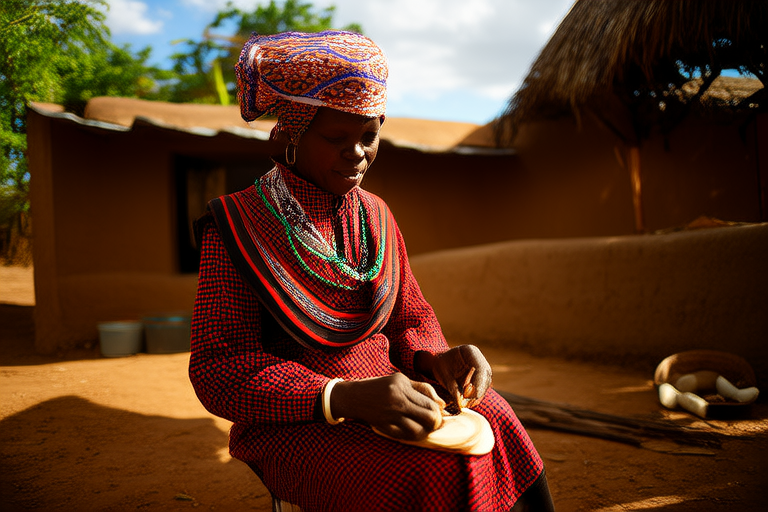Hidden Gems: Discovering the World’s Most Fascinating Cultural Practices

Hidden Gems: Discovering the World’s Most Fascinating Cultural Practices
Introduction
Cultural practices are the threads that weave humanity together, offering a glimpse into the values, beliefs, and histories of diverse communities. They serve as windows to understanding how people across the globe find meaning in their lives, celebrate milestones, and connect with one another. While some traditions are widely known, countless others remain hidden gems, tucked away in remote corners of the world or overshadowed by more dominant cultures. These lesser-known practices not only enrich our appreciation for human diversity but also remind us of the creativity and resilience embedded in every society. In this article, we will journey across continents to uncover some of the world’s most fascinating cultural practices, explore their significance, and reflect on why preserving them is vital for global heritage.
Unique Cultural Practices from Around the World
The Whistled Language of La Gomera
Nestled in the Canary Islands, La Gomera is home to an extraordinary form of communication known as Silbo Gomero. This whistled language allows inhabitants to convey complex messages over long distances by mimicking the tones and rhythms of spoken Spanish through whistles. Developed centuries ago to overcome the island’s rugged terrain, Silbo Gomero was once at risk of disappearing due to modernization. However, efforts to teach it in schools have revived its use, ensuring that this unique practice continues to thrive as both a practical tool and a cultural treasure.
Japan’s Hanami Tradition
In Japan, the fleeting beauty of cherry blossoms is celebrated annually during Hanami, a tradition that dates back over a thousand years. During this time, people gather under blooming sakura trees to enjoy picnics, poetry, and moments of quiet reflection. The practice symbolizes the transient nature of life, encouraging participants to cherish the present moment. Beyond its aesthetic appeal, Hanami fosters community bonding and reinforces the Japanese philosophy of mono no aware—the awareness of impermanence.
Mexico’s Day of the Dead
One of Mexico’s most iconic celebrations, Día de los Muertos (Day of the Dead), honors deceased loved ones with vibrant altars, offerings, and parades. Unlike somber Western approaches to death, this festival embraces mortality with joy and reverence. Families create ofrendas adorned with marigolds, candles, photographs, and favorite foods of the departed, believing that these items guide spirits back to the living world for a brief reunion. This celebration underscores the enduring connection between the living and the dead, celebrating life even in the face of loss.
Ethiopia’s Coffee Ceremony
In Ethiopia, coffee is more than just a beverage—it is a cornerstone of social interaction and hospitality. The traditional Ethiopian coffee ceremony involves roasting green coffee beans over an open flame, grinding them by hand, and brewing the rich liquid in a special pot called a jebena. Participants sit together, sharing stories and sipping multiple rounds of coffee while incense fills the air. This ritual highlights the importance of slowing down, fostering meaningful connections, and appreciating the simple pleasures of life.
New Zealand’s Haka Performance
The haka, a powerful Maori dance characterized by rhythmic chanting, stomping, and facial expressions, has become synonymous with New Zealand’s national identity. Originally performed by warriors before battle to intimidate opponents and invoke ancestral spirits, the haka now serves various purposes, including welcoming guests, commemorating achievements, and expressing unity. Its raw energy and deep symbolism make it a profound cultural expression that resonates far beyond New Zealand’s borders.
Why These Practices Matter
Cultural practices like those highlighted above hold immense value, not only for the communities that nurture them but also for humanity as a whole. They provide insight into how different societies interpret the world around them and navigate universal themes such as life, death, relationships, and spirituality. By studying these traditions, we gain a broader perspective on what it means to be human, challenging stereotypes and fostering empathy.
Moreover, many of these practices embody sustainable ways of living that align with contemporary environmental concerns. For instance, the Ethiopian coffee ceremony emphasizes resourcefulness and mindfulness, while Silbo Gomero demonstrates how innovation can arise from geographical challenges without relying on technology. Such examples offer valuable lessons for addressing modern issues like climate change and digital dependency.
On a deeper level, cultural practices often serve as anchors of identity, helping individuals and groups maintain a sense of belonging in an increasingly globalized world. They preserve ancestral knowledge, pass down moral teachings, and strengthen communal ties. When these traditions fade, so too does a piece of collective memory, leaving future generations disconnected from their roots. Efforts to document, protect, and share these practices ensure that they remain vibrant sources of inspiration and learning.
Conclusion
The world’s hidden cultural gems are testaments to human ingenuity, adaptability, and creativity. From the melodic whistles of La Gomera to the colorful festivities of Día de los Muertos, each practice tells a story about the people who created it and the environments they inhabit. These traditions remind us that despite our differences, we share common aspirations—to connect, to remember, and to celebrate life in all its forms.
As globalization accelerates and homogenization threatens local customs, it becomes imperative to champion cultural diversity. By embracing and safeguarding these hidden gems, we honor the past, enrich the present, and pave the way for a more inclusive and harmonious future. Let us continue to seek out and appreciate the myriad ways in which humanity expresses itself, for in doing so, we discover not only the world but also ourselves.